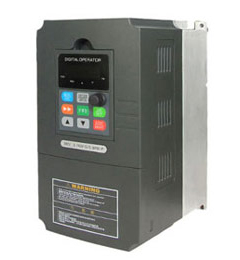Variable Speed Drive Energy Savings
Every motor driven application needs to be evaluated and the starting and control method properly chosen to meet those process control needs. If variable speed is not required for the process and the power and mechanical systems are robust the direct-on-line (DOL) starting may be the best choice. If the power system and / or the mechanical system are weak and only fixed speed is required for the process then a reduced voltage starter with bypass may be the best choice as long as the reduced starting torque these starters produce is large enough to accelerate the load to full speed in a reasonable time to prevent overheating of the motor rotor, stator and / or the starter.

From a pure torque production perspective, a variable speed drive (VSD) provides more torque per ampere than any other starting method. I have applied variable speed drives on centrifugal fan applications where the load inertia was high and the power system was weak and the only way to reliably start the load while not drawing not more than rated current from the motor was with this controller. It took perhaps two minutes to accelerate to full speed but no one cared because the motor was never overloaded. Once the motor was up to speed a bypass contactor was employed to eliminate the losses from the variable speed drive.
Variable speed drives like any medicine, have potential side effects. But with careful consideration of these side effects such as harmonics, EMI / RFI, Common-Mode Currents, Reflected Waves, etc. etc. variable speed drive can be successfully applied with minimal impact on other systems.
From an energy savings perspective the only applications that really qualify for potential significant savings are centrifugal fans, pumps and compressors where the application bears out that most of the time they will be operated below the base speed of the motor. The decision to use of variable speed drives on all other applications should be made on the basis of process and mechanical requirements, not energy savings.
There are also different types of drives for different types of motors, that is synchronous or induction for example. Therefore, evaluating case by case makes sense and other considerations along with the above mentioned also needs to be carried out for energy savings. Here are some examples.

From a pure torque production perspective, a variable speed drive (VSD) provides more torque per ampere than any other starting method. I have applied variable speed drives on centrifugal fan applications where the load inertia was high and the power system was weak and the only way to reliably start the load while not drawing not more than rated current from the motor was with this controller. It took perhaps two minutes to accelerate to full speed but no one cared because the motor was never overloaded. Once the motor was up to speed a bypass contactor was employed to eliminate the losses from the variable speed drive.
Variable speed drives like any medicine, have potential side effects. But with careful consideration of these side effects such as harmonics, EMI / RFI, Common-Mode Currents, Reflected Waves, etc. etc. variable speed drive can be successfully applied with minimal impact on other systems.
From an energy savings perspective the only applications that really qualify for potential significant savings are centrifugal fans, pumps and compressors where the application bears out that most of the time they will be operated below the base speed of the motor. The decision to use of variable speed drives on all other applications should be made on the basis of process and mechanical requirements, not energy savings.
There are also different types of drives for different types of motors, that is synchronous or induction for example. Therefore, evaluating case by case makes sense and other considerations along with the above mentioned also needs to be carried out for energy savings. Here are some examples.
- There are multiple motors that must start with the variable speed drive to reduce the starting current. In this case, one should consider the number of motors that can start in succession, using the same drive.
- Check with the variable speed drive manufacturer whether they offer a simplified drive for starting only. For starting only, the losses aren’t of greater importance. Preferably you may want the variable speed drive to come with bypass switch already incorporated to it.
- As it comes to soft starters, those vary only voltage, never forget that these soft starters reduce the torque of the motor to the ratio of voltage to the power of 2.2 (yes 2.2, not 2), so you will want to evaluate if the motor will accelerate the load with the desired voltage, and if so, without overheating. Also remember that some loads are more demanding than others. Check for torque requirements and load inertia. If the motor can accelerate, then a soft start can be used. If not, a variable speed drive can be one solution.
- When the process requires, or the output of production varies, the application of a variable speed drive makes sense.

